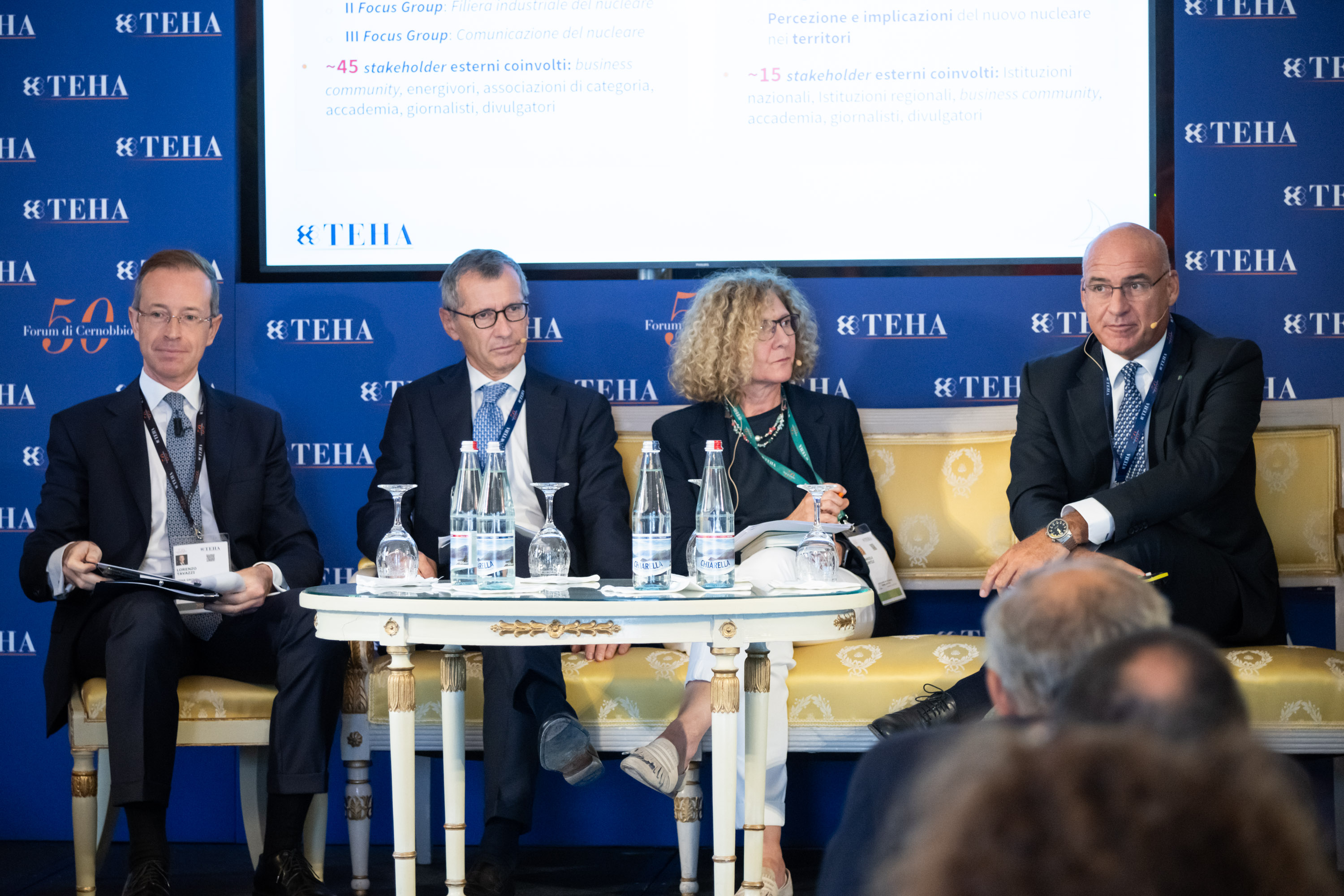07 September 2024

In a context that sees a growing need for decarbonised electricity, the new nuclear power is proposed as a key solution - with a view to complementing renewables - for achieving climate neutrality objectives, strengthening the Italy's energy security and its competitiveness. Capable of guaranteeing a programmable, modulable and fixed-cost supply, the new nuclear power acts as a ‘systemic stabiliser’, enabling a decarbonised and technologically independent electricity production from abroad, which offers Italy and Europe a strategic opportunity - if seized immediately - to gather around a common industrial and development plan, capable of increasing their Gross Domestic Product.
Simplified modular design, enhanced safety, the ability to combine electricity production, heat for industrial uses and hydrogen, flexibility and limited consumption of water and land are some of the peculiar characteristics that make the new nuclear power plant - consisting of Small Modular Reactor (SMR) and Advanced Modular Reactor (AMR) - the optimal solution to support the decarbonisation path. Being a complementary technology to renewables, it allows optimising system costs and ensuring a competitive price for end customers, especially energy-intensive ones.
These are the results of the Study 'The new nuclear power in Italy for citizens and businesses. The role for decarbonization, energy security and competitiveness', made by Edison, Ansaldo Nucleare, and TEHA Group and presented at the 50th Forum 'Intelligence on the World, Europe, and Italy' by TEHA, during a press conference that was participated by Valerio De Molli, Managing Partner and CEO of The European House – Ambrosetti and TEHA Group, Nicola Monti, CEO of Edison, Daniela Gentile, CEO of Ansaldo Nucleare, and Ferruccio Resta, Professor at the Polythecnic of Milan; President of the Fondazione Politecnico di Milano; President of the Bruno Kessler Foundation; President of the Centro Nazionale per la Mobilità Sostenibile, and Member of the Advisory Board that supported the Study.

The technological development of new nuclear power is part of an energy context in which nuclear energy continues to play a crucial role and is now experiencing a phase of expansion worldwide, with 61 new reactor projects under construction. Nuclear power generation has historically provided a significant share of the world's electricity (an average of 12.5% of the total over the past 50 years), and although Europe has reduced its share of the global total, nuclear power remains the European Union's first source of electricity generation today (22% of the total).
In a context of fierce international competition, Europe is taking concrete steps to promote the development of new nuclear power, which has in fact been included among the key technologies for the transition in the Net Zero Industry Act. In March 2024, the European Industrial Alliance on SMRs was also launched - which Italy has also joined - which aims to promote a common European programme and create the best conditions for the deployment of SMRs throughout the European Union.
The study identifies the distinctive features that underpin the paradigm shift enabled by the new nuclear power and that may be implemented with the deployment of the first SMRs as early as the beginning of the next decade. These are specifically
- modularity enabling a reduction in construction time
- improved financeability due to lower financial and capital costs
- enhanced safety through passive security systems
- flexibility in site selection limited water and soil consumption
- ability to combine electricity production with heat for industrial use and hydrogen
- reduction of nuclear waste produced.
In addition, it outlines the development levers and enabling factors of the new nuclear power in Italy in order to maximise the benefits for end users and the country-system and to enhance the competencies of the industrial and research chain.
Development levers:
- Supply chain and skills, understood as the elaboration of an industrial plan with a medium-long term vision to support the development of the Italian industrial supply chain, introducing support mechanisms for company investments to stimulate industrial innovation and increase production capacity.
- Definition of a skills development plan with a vision extended to all the professional figures required for a nuclear programme.
- Financing modalities, declined in loan guarantees and stable price mechanisms for the sale of nuclear energy in the medium to long term.
- Licensing and permitting, understood as (i) the initiation of joint processes between the Nuclear Authorities of different European states to harmonise European standards and practices, leading to standardisation of safety requirements, enabling serial economies and maximising the benefits of new nuclear power (both in terms of time and cost) ii) adherence to the Joint Early Reviews, enabling Italy to contribute to the creation of a common European pre-licensing framework aimed at reducing the time it takes to complete the works; iii) the inclusion of the new nuclear projects among the priority and strategic works for the country in order to speed up their grounding, including through an efficient public-private partnership model.
Enabling factors:
- Establishing a regulatory framework, including the establishment of a NEPIO (Nuclear Energy Program Implementing Organization) with the task of assessing the status of the basic infrastructure required for a national nuclear programme and providing the Government with the necessary guidance for their full development and operation
- Implementing a National Repository for the storage and disposal of radioactive waste, providing incentives and enhancement measures for the territory hosting the future Repository.
- Developing a culture of consensus with a communication campaign addressed to citizens on the impacts and benefits for the territories arising from the construction of nuclear plants and the differences between new nuclear power and previous generation nuclear power.
Download the Study (in Italian)
Download the Executive Summary (in Italian)
